UP unweighting vs DOWN unweighting / Switzerland vs US 🙂
Hi carvers,
First, I apologize for my english, I'm from France and the french people are well-known for their bad level in foreign languages 😞
I'm 57 and like James, I'm a nineties hard boot snowboarder 🙂 Then, after ~10 years of skiing only, return to snowboard ten years ago with an objective : heel side laid-down carving with soft boot ! Inspired by Sacha from funcarve russian soft boot carving school (so steezy :
;
) and the Swoard community (2 times in Zinal, Switzerland, for the ECS (Extreme Carving Session)). Seb Henry Swoard Team is also a soft boot carver spoecialist (here in hard then soft boot, identical style... :
or
With Swoard and funcarve (inspired by the Swoard team), all is about Down Unweighting (DU) turns. I love this sensation to unbend knees to load the edge at the apex of turn 🙂 When I saw James'vid, I've instantly liked his style, but I noticed he used only UP unweighting (UU) approach.
I've a question : do you think the UU allows easier carving in steeper terrain, or is it simply possible to do exactly the same with DU ?? DU is very physical, but is very aesthetic (for me) and useful to generate some speed on mellow terrain...
Other question, unrelative : for frontside turns, do boot stiffeners really help relieve ankle pain and reduce calf fatigue ?
Thank you in advance for your answer !
Gérard.
I’ve got some thoughts on this, though I’m not sure they’re right…
I think one advantage of the UU transition is that it gives you more leverage on a wide board so that you’re not as reliant on ankle steering. UU along with extension thru the turn (as well as the push/pull) works well on the steps when you have more inclination (of your body) and can afford to have your mass further from the edge. On mellow terrain it’s steezy riding too.
When terrain gets dicey/sketchy, I like more of a DU transition. You’re most vulnerable when you’re unweighted and haven’t set the edge, so minimizing that time is beneficial. Keeping your COM closer to the board and really stacking it over the edge is an advantage as well. The subsequent push can be a great feeling when appropriate, but sometimes I simply like to keep my mass closer to the edge and more effectively absorb chatter as well.
Overall I think UU and DU simply describe the extremes during the transition… in practice I think I’m often somewhere in the middle. More of a cross-through rather than a strict cross-over or cross-under as the old timers (myself included) would have described the COM movement.
I’ll add that I’m more practical than stylish though, and not at the same level as these experts.
Big White, BC, Canada
Fantastic video @powder-surfer! Your analysis has improved for sure! The only thing I might change is the credit you gave CASI for up weighting. If anything, CASI has made efforts to suppress carving in general.
@g2florette: I wouldn't say UU is easier on steeps, in fact I would argue the opposite. DU will slow you down and tighten up your turns too. It gets you into the apex faster so you have less speed and less edge pressure through the turn. Also, because you're already lying on the snow it's easier to absorb chatter, as opposed to the more balanced UU turn where even slight imperfections in the surface will throw you off.
Both turns I think are very physical on steeps. I prefer the feeling of the UU turn. It seems more pure to me as I aim to slice the snow, balance on my edge and maintain as much energy through the turn as possible. When I use DU on green runs I run out of speed quite quickly and have to go back to UU.
Here's a video I made last year for a similar discussion on another forum. It starts with my normal UU turns but at 14 seconds I switch to DU to absorb that roller. If I hadn't done that I would lose too much speed as I ride up the roller and I wouldn't have enough to initiate that toeside. At 17 seconds I enter a DU heelside. I chose DU here again because the toeside before was so tight that I hardly had any room left on the side of the run so I went for the quicker initiation DU turn. The final turn is also DU, mostly because at that point I'm in the DU rhythm.
It wasn't until somewhat recently that I started to analyze my turns in terms of un-weighting. Before that I was referring to my DU turns as "safety turns" because I would use them when I was running out of room for an UU turn near the side of the run. I would also use them sometimes in bad conditions or to turn quickly to avoid a rut or a skier, like @board-doctor said.
Posted by: @board-doctorWhen terrain gets dicey/sketchy, I like more of a DU transition.
Another time I would use DU is when I don't have enough speed for initiation. Check out this video (same run, different season). At 46 seconds I opt for a DU toeside initiation because I misjudged the line and was low on speed (and also running out space by the side of the run).
So I use both turns as I deem appropriate, most of the time without thinking about it. In my best, most stylish turns, I aim to minimize my movements so that any unweighting, whether in the knees or through extension at the hips, is almost imperceptible. I like to make it look easy, as though I'm just leaning and twisting. My boards in general are better suited to the UU turns, designed for high grip. The C4 can do both with ease though, it's a little more "slarvy" (slide/carve).
And yes @g2florette, boot stiffeners do help take the pressure off your ankles and reduce fatigue. Stiffer boots will bring you closer to that hard boot feel where your ankles are relaxed and you're just leaning into the boot top. My setup is stiffer than some of the softer hard boots out there.
I'm just slaying...
The thing with CASI is they seemed to abandon a lot of the ski basics to build fundamentals for freestyle... ie. the duck-footed warrior stance.
Big White does a lot with CASI, and this is where the highest levels of instruction are still at (in terms of carving):
Level 5: "You always use your hips and knees to turn the snowboard and maintain alignment with upper and lower body."
Level 6: "You consistently edge your board at the start of your turn on groomed terrain."
Though apparently at higher levels they do start to move forward from that strict warrior stance:
Here's a video from another local CASI level 4 instructor on up & down:
I think James is probably more Alpine/hard-boot oriented.
Big White, BC, Canada
@board-doctor yes, you're right, my fault.
Posted by: @board-doctorstart to move forward from that strict warrior stance:
This instructor's setup is directional slightly duck angles, and yeah, I didn't see his deep carving 🙂
Amore al1
Here's the CASI level 4 riding standard for carving (at the 6min mark):
Returning to the 'neutral' (warrior pose) between turns. There's probably less than 100 people with this certification in all of Canada, and CASI doesn't go beyond that. It is what it is.
Big White, BC, Canada
Wait a second... I was confused. The animation in your video @powder-surfer belongs to @carverarcalis. I hope you got his permission to publish it? I don't mind at all that you clip some of my footage, so long as my channel is credited in the description. I got into some trouble earlier this season by "borrowing" footage from other riders. I got an email from Jeremy Jones' lawyer after the Secrets Part I. Turns out they don't mind, but they prefer to be asked in advance and they require credit.
I've seen your videos before on YouTube @powder-surfer, it's cool stuff. Subscribed today. Glad to see you've joined the forum! Welcome!
Posted by: @board-doctorHere's the CASI level 4 riding standard for carving (at the 6min mark):
What a joke! If that's supposed to be the highest level of carving then what the heck are we doing here???
I had an idea earlier this season to troll CASI by publishing a video called something like "New CASI Level Five Turning Standards". It would just me doing some of their corridor turns on some steep terrain. Never got the footage though, maybe next winter... Presumably there are many people who follow the #CASI theme on YouTube who would see the video and freak out. Then a day or two later I would get a "cease and desist" letter from the CASI lawyers and would have to take it down or change the title. I think it would be funny but I'm sure some people would be upset. In a way, that's what would make it so funny...
I'm just slaying...
Hey guys! I just saw the youtube short, would be nice if you put some credit @powder-surfer ! 🤣
No way! @wild-cherry subscribed to my channel😱 Incredible🙂🤟🏻 I'm very glad to join https://carversconnection.com/ here can get useful information and I can chat with cool carvers, I really like it🫶🏻🙃 Thank you!
It's not my animation, I found it in Instagram is some arabic acc and in Chinese tik-tok (douyin). I checked when they posted it, it definitely belongs to @carverarcalis . Sure, I add ur name in description 🙂
About YouTube Shorts: you can post part of someone else’s video in Shorts, but you need to add your video, make it in a new way (Reels and blocked Tik-tok have the same rules. Am I wrong? In any case, I haven't any copyright strikes.
Posted by: @wild-cherrytroll CASI
This is a great idea, I think it will be a cool vid, they need constructive criticism haha.
Ok, we say this is an intermediate level of carving 😁Posted by: @board-doctorCASI level 4 riding
Amore al1
I came across the CASI reference guide (2018), and there's actually a lot of good stuff in it!
I found this particularly interesting. Old-timers know the cross-over & cross-under, and perhaps the cross-through... here' they're calling it mid-unweighted:
https://issuu.com/casintc/docs/casi_ref_guide_2016_en_web_lores/50
It's unfortunate that they seem to take baby steps with beginners... who give up before they get to the good stuff.
Separation is an advanced competancy:
Big White, BC, Canada
One factor that is often forgotten is the rate at which any weighting movement happens. If you stand on an analog bathroom scale and move up and down slowly, the dial will remain pretty steady. From a standing position, if you drop to a crouch very rapidly, you will notice a change, as will doing the reverse. How abrupt your movement are when carving is very impactful. I (painfully) remember the hours of discussion describing weighting techniques- up and down weighting, up and down unweighting, terrain weighting and unweighting, cossover vs. crossunder, avalement etc., and the only constant is that they are all present all the time, just to different degrees. The CASI video with the woman and her coffee demonstrates a common misconception- she's not spilling it because she's crouched but rather that she is walking slowly and deliberately. Again, rate of change is a factor.
- 21 Forums
- 227 Topics
- 2,206 Posts
- 0 Online
- 511 Members



